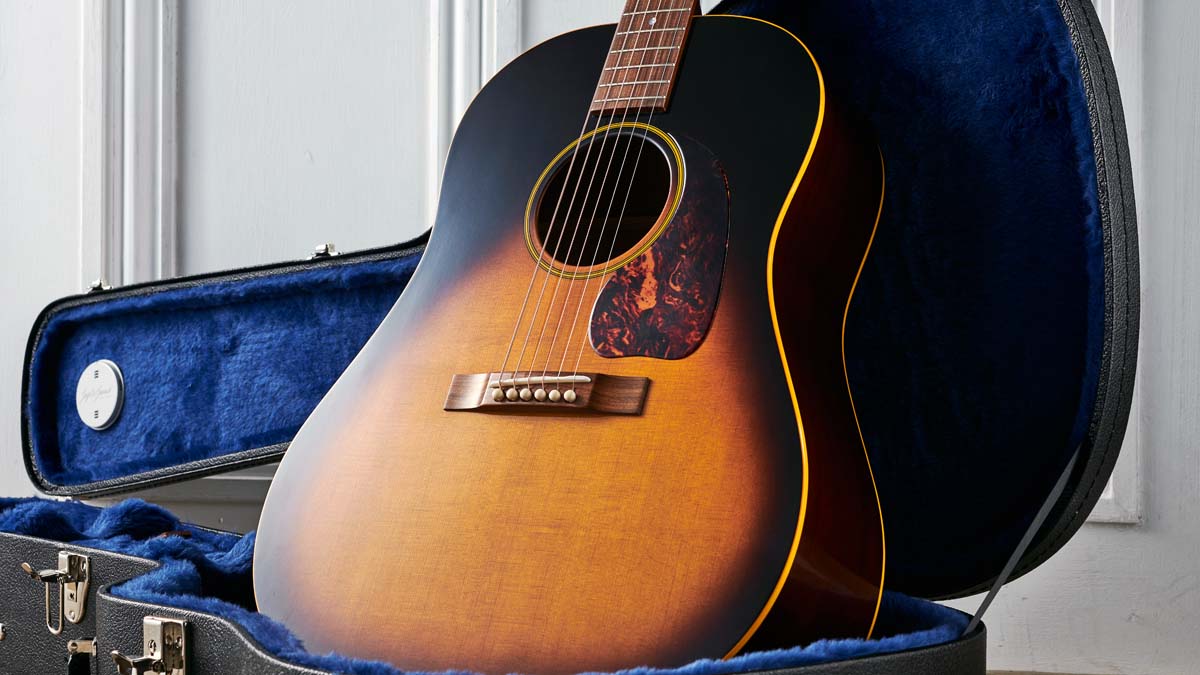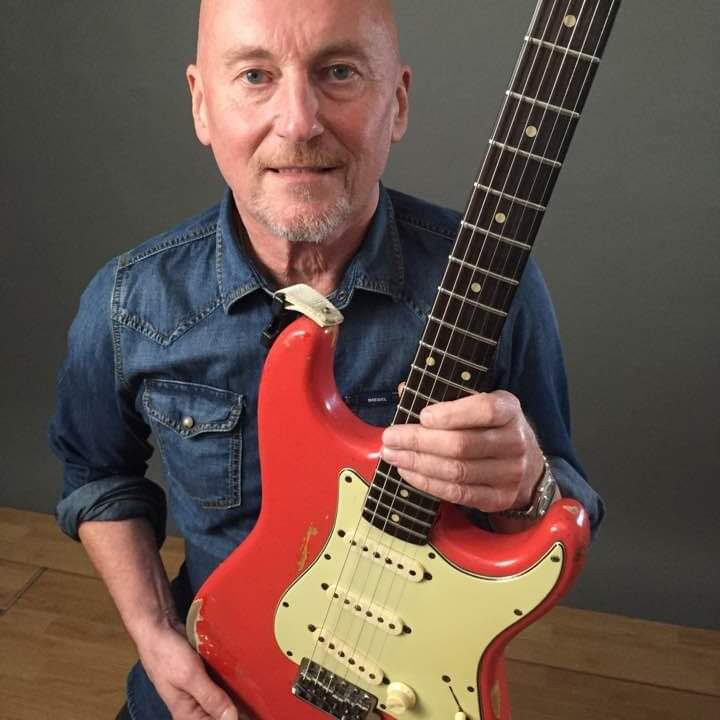Guitar World Verdict
The Forty Three is an artisanal slope-shoulder dread' with 1940s charm by the bucketload. Its bold voice will satisfy strummers and Delta blues cats alike, but also make fingerpickers alive to its charms.
Pros
- +
Impeccable build.
- +
Lovely attention to details.
- +
Big and boisterous tone.
- +
It's versatile.
- +
Great playability
Cons
- -
The Gibson it’s modelled after is still available.
You can trust Guitar World
There’s no disguising the influence of Gibson’s ubiquitous J-45 on The Forty Three from Atkin. As any connoisseur of acoustic guitars will know, from the model’s outset Gibson never stopped tinkering with its appointments, until recently mostly to its detriment.
But with The Forty Three, Alister has settled on what many believe is its finest incarnation. This particular set of features arrived a year after the model’s 1942 debut.
So we see the perfectly proportioned round-shouldered dreadnought outline, sultry dark brown sunburst finish, dot-inlaid fingerboard, straight bridge, torty teardrop pickguard, ‘banner’-style headstock with three-on-a-plate Kluson plastic-button tuners, seven-ply black-and-white soundhole rosette, and simple cream body binding.
All this is built around a solid mahogany back, sides and neck, plus Santos rosewood fingerboard (pau ferro) and baked Sitka spruce top construction.
Designed to go head to head with arch competitor Martin’s already market-leading and similarly mahogany-bodied D-18, Gibson’s decision to distance the two models in looks was a good one. From those days until now, both have their followers and both remain each builder’s workhorse flat-top.
Modern builders have seriously upped the ante when it comes to precision and consistency of construction. Atkin is no exception
But back to The Forty Three. While many vintage acoustics sound fantastic and play with a slipperiness that belies their generally large necks, modern builders have seriously upped the ante when it comes to precision and consistency of construction. Atkin is no exception and his guitars are widely seen as some of the best around.
Indeed, the Buddy Holly Educational Foundation (Buddy played an early J-45) would surely otherwise not have entrusted him to create instruments that his widow, María Elena Holly, gifts to the likes of Paul McCartney, Bruce Springsteen, Elvis Costello, Dave Grohl, Willie Nelson, Robert Plant and many more.
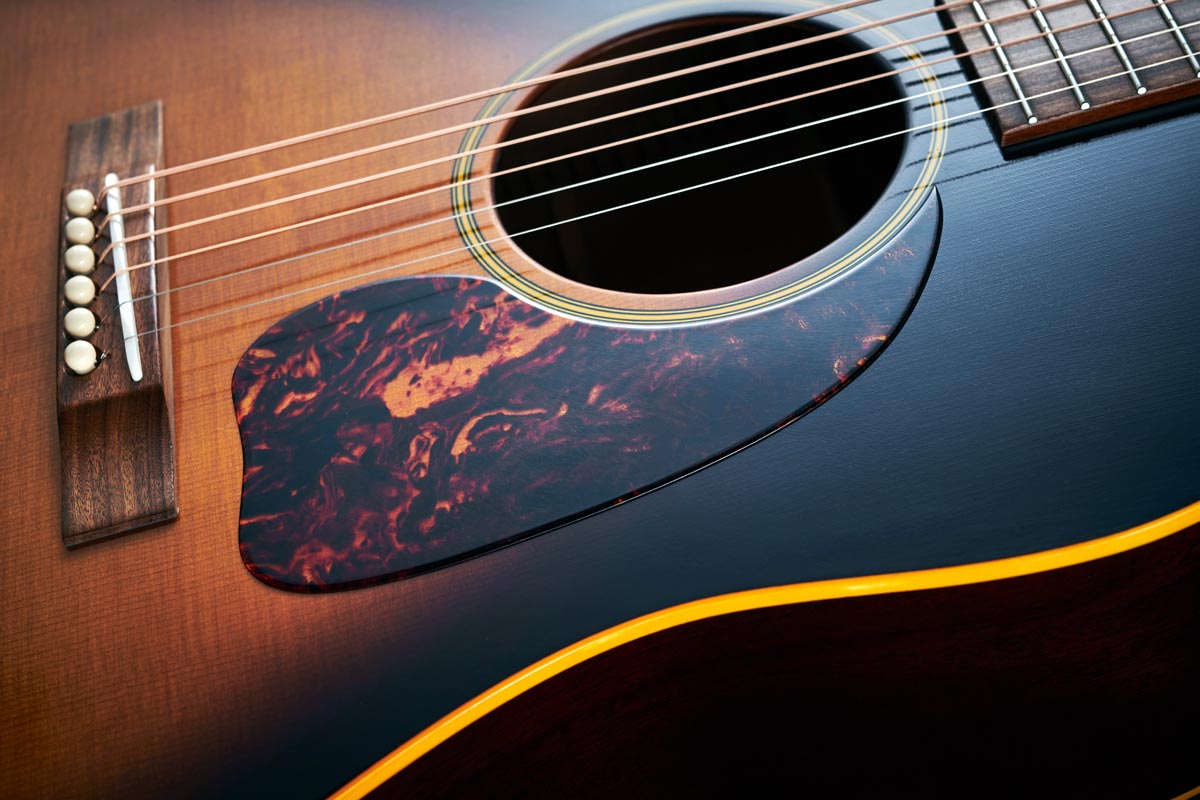
The colours of the faux tortoiseshell pickguard, bronzed toner to enrich the lacquer finish, and the subtle grain of the Santos rosewood bridge create a glorious mix of warm earth tones.
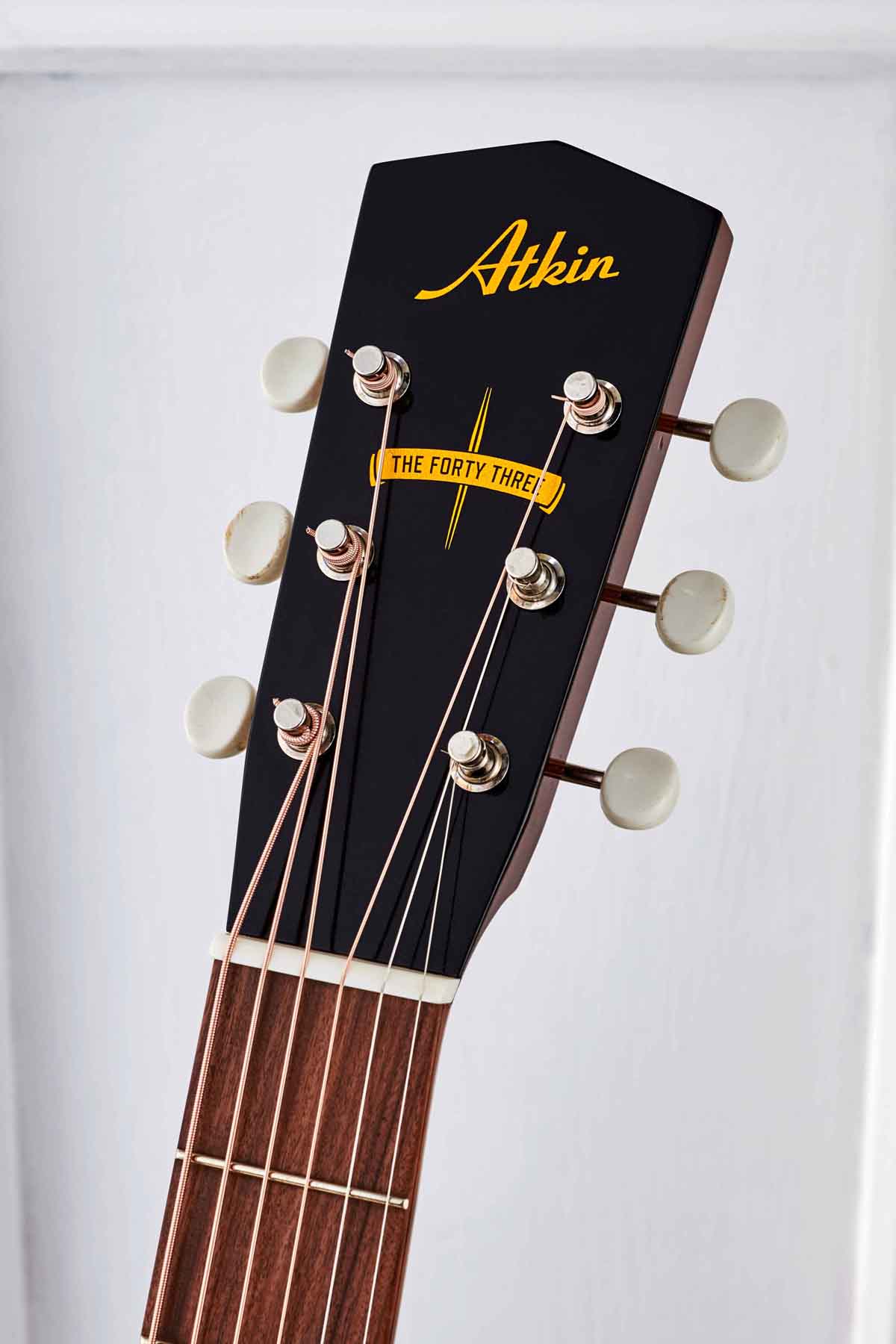
Alister Atkin has managed to design one of the most pleasing headstock shapes and brand logos. The ‘banner’-style design is typical of the wartime period.
Atkin offers two levels of finish: full gloss and aged (with lacquer checking but no dings or dents). Rather than some of Alister’s extreme ageing that we’ve seen, our review model has more of a gentle patina, not unlike Gibson’s VOS look, with only mild finish checking here and there.
The lacquer is also tinted and lends a lovely bronzed look to the top’s yellow middle area, edge binding, soundhole ring, Atkin logo and ‘The Forty Three’ banner script.
Since the model this one seeks to emulate was released as America entered WWII, with part of Kalamazoo’s production given over to the war effort and with a general feeling of austerity in the air, the Atkin, too, is as simple as it gets, with no fancy backstrip and no ornamentation anywhere save a subtle heel cap and those pearl dot markers.
The Atkin’s simplicity makes it so compelling. It seems warm and welcoming, not looking down its pearl-encrusted, gold-plated nose
Yet that’s what’s makes the instrument so compelling. It seems warm and welcoming to all, not looking down its pearl-encrusted, gold-plated nose and accessible only to a select band of elites.
Of course, Alister’s renowned attention to detail and impeccable craftsmanship, including his own take on pre-war-style hand-scalloped spruce bracing and meticulous mahogany kerfing, means that in every other respect The Forty Three is designed and built to deliver at the highest level.
Feel & Sounds
The Forty Three boasts a fine palm-full of a neck; it’s a classic rounded ‘C’ that’s fulsome but comfortable. In fact, for the open-position chording that’s most likely to be its staple duty it’s just about perfect. The 42mm (1.65-inch) nut width might deter serious fingerpickers, but it didn’t fuss James Taylor or Ralph McTell, both fine fingerstyle songsmiths and both J-45/J-50 players.
Moving further up the neck, The Forty Three’s medium-low action makes those occasional licks slick and easy. Of course, even though the guitar apes the early Gibson model’s 19 medium-fine frets (one less than usual), you’d surely never miss it.
While the model from which The Forty Three took inspiration is usually one of the softer-sounding acoustics with warm bottom-end and sweet trebles, the Atkin is a strident beast that takes no prisoners
Regarding sounds, there are so many preconceptions around acoustic guitar tones that one must be wary of that rabbit hole. For instance, “dreadnoughts are booming strummers and don’t fingerpick well”; or, “mahogany is bright-sounding and not as rich as rosewood.”
Well, anyone that’s heard Messrs Taylor and McTell, Donovan, Woody Guthrie, Buddy Holly and Paul Weller, or blues legends like Lightnin’ Hopkins and Mississippi John Hurt, can hear that round-shoulder dreadnoughts excel at almost everything. Yes, more specialist instruments do certain things specifically well, but as a rule a dread is one of the greatest all-rounders.
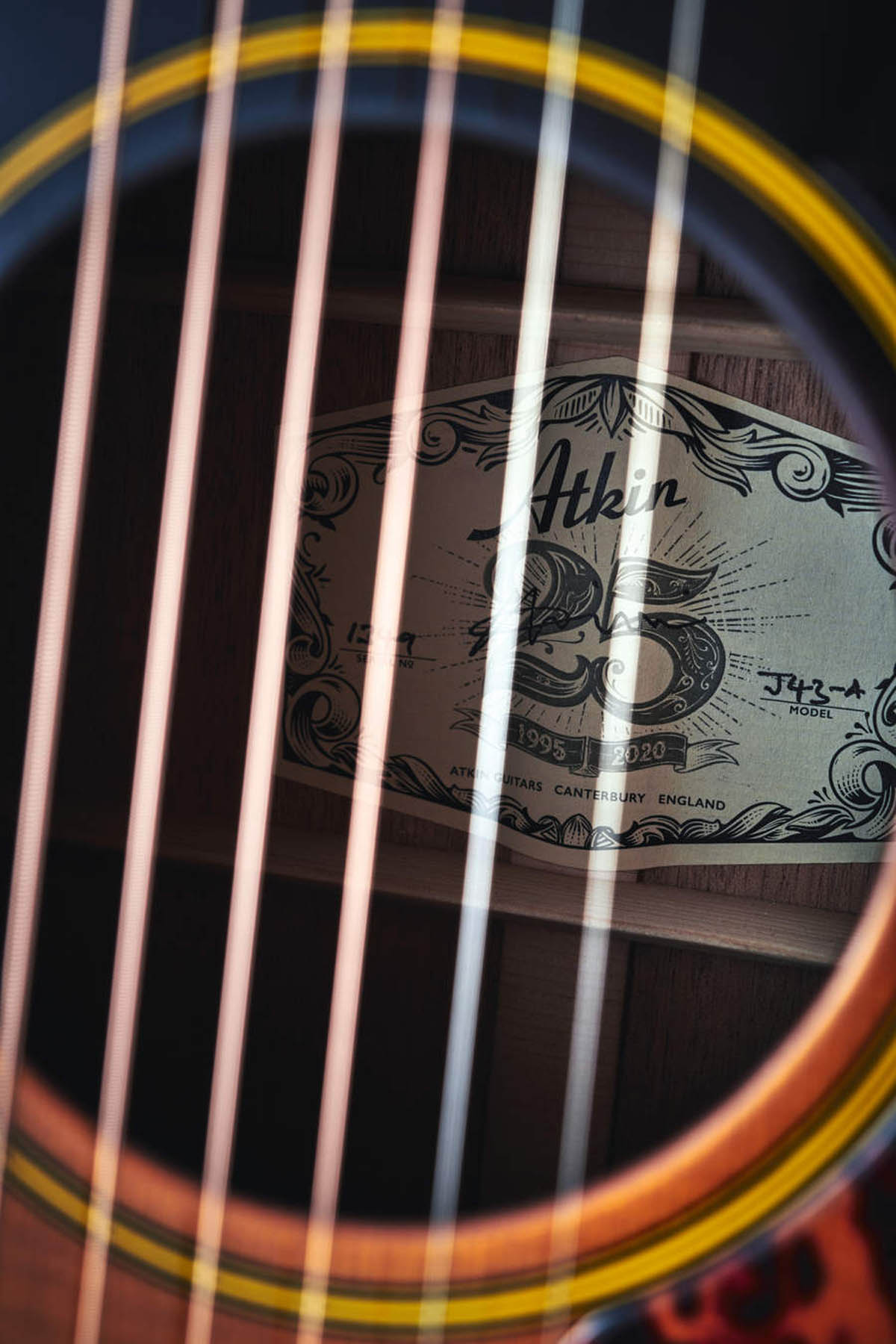
The label is old-school, matching the tinted lacquer that gives this lovely bronzed look to the soundhole ring.
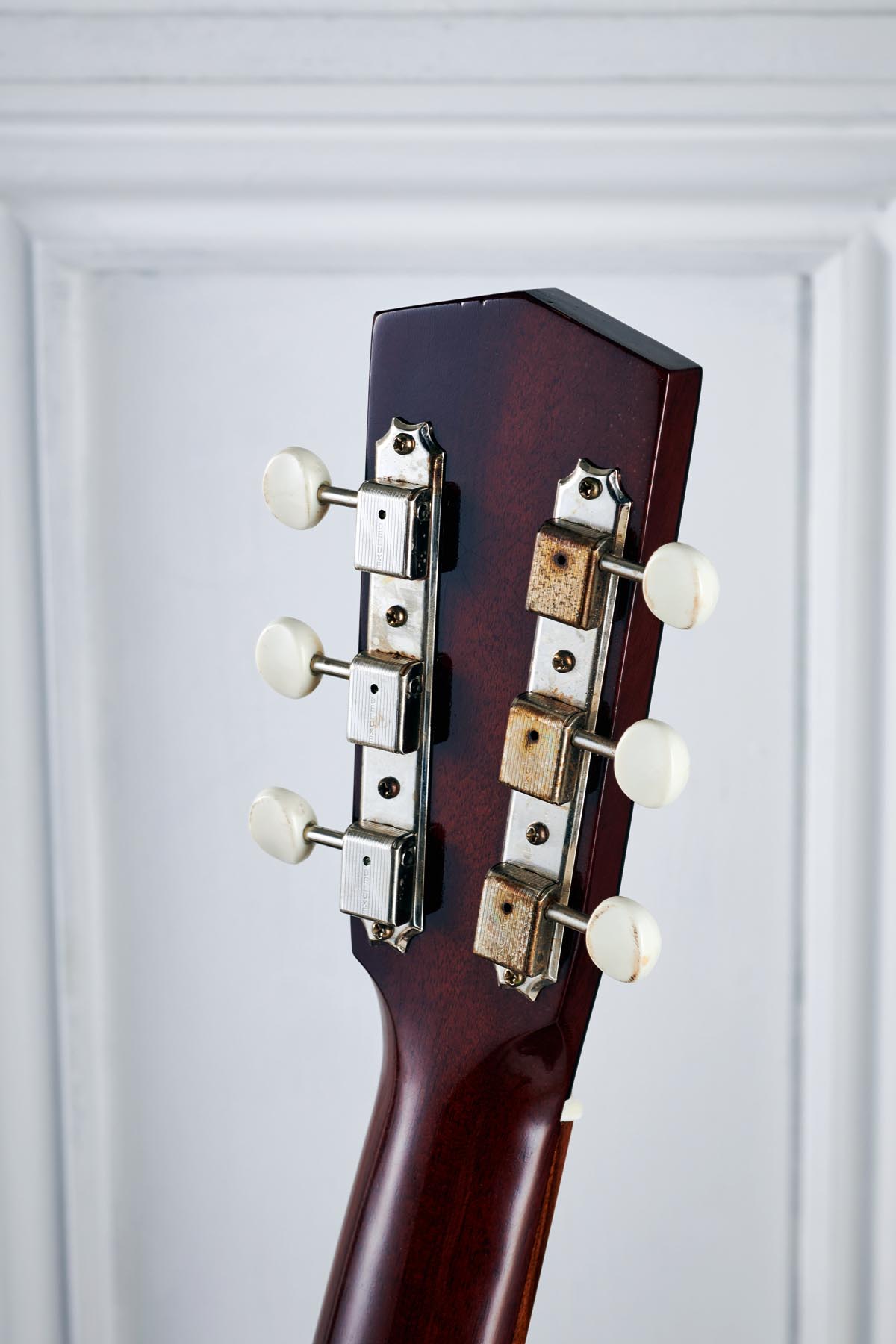
Aged three-on-a-plate Kluson tuners with classic plastic buttons sit behind a walnut-capped headstock with Alister Atkin’s striking pyramid top design.
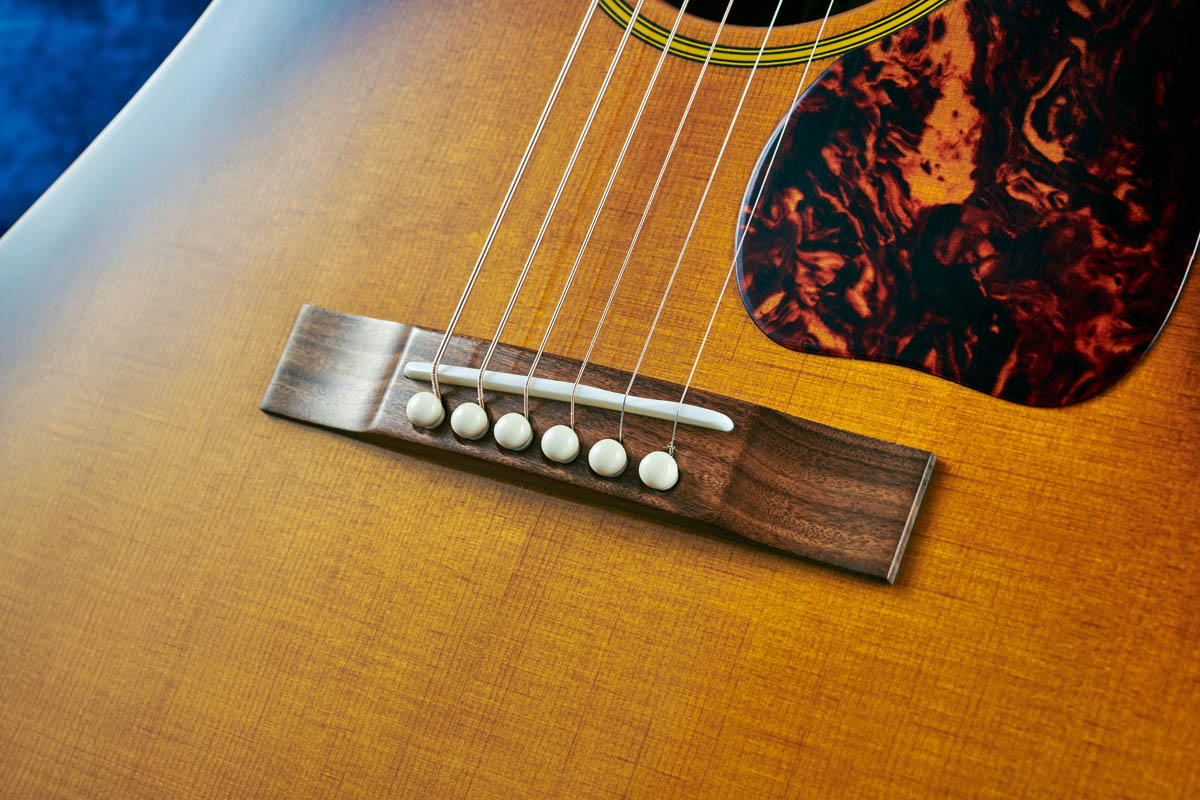
The close-grained Sitka spruce top is baked or ‘torrefied’ to help create an open, vintage-style tone. Note the ‘pre-belly’ style straight bridge.
Grabbing a pick and bashing out a bit of Delta-style blues, The Forty Three complies beautifully. It kicks out an almost dirty acoustic tone if you dig in hard, with single-string licks standing loud and proud.
But then back off for pop-style strumming and the balance across the EQ spectrum ensures that no frequency dominates. One has to take care not to sound like a pretentious wine buff here, but The Forty Three combines rich and bright in a pleasing but almost bolshie manner.
Insert quote here
The elephant in the room, of course, is that the Gibson J-45 is still being made, in similar guise to this and really rather well. So whether you’d plump for an instrument built in larger quantities with the original name on the headstock, or one that’s crafted by a tiny group of artisans in the UK in small volumes to exacting specs is your choice.
Resale price is often a worry, too. Well, Atkin guitars strongly retain their value; we only found one used The Forty Three for sale in the UK, and the asking price was just shy of £2,500.
But this was an extremely enjoyable guitar to ‘own’ for a while and, even with several fine acoustics joining this reviewer in lockdown, as often as not The Forty Three proved to be the irresistible choice. Several dealers stock them and they are currently available online, so if you want a brand-new brute of an acoustic with eight decades of mojo, get clicking now!
Verdict
We’ve been lucky enough to play quite a few Atkin guitars. Every one exudes mojo and tone by the bucketload. While the model from which The Forty Three took inspiration is usually one of the softer-sounding acoustics with warm bottom-end and sweet trebles, the Atkin is a strident beast that takes no prisoners.
A subtle picker it’s not (think more Paul Weller than Paul Simon), although if you tickle the strings they’ll oblige. No, where The Forty Three excels is in being a loud cannon of a guitar that barks with a voice demanding to be heard above the melée.
We haven’t mentioned that the Sitka spruce top is baked to add an aged element that many say brings an openness of tone new instruments can lack. That’s probably contributing to its power and aggression.
It’s possibly also why it’s so responsive to different styles of pick; harder materials like Tortex or softer ones such as nylon or celluloid give very different results (try it on your own guitars – our favourite was a Dunlop Jazz III XL).
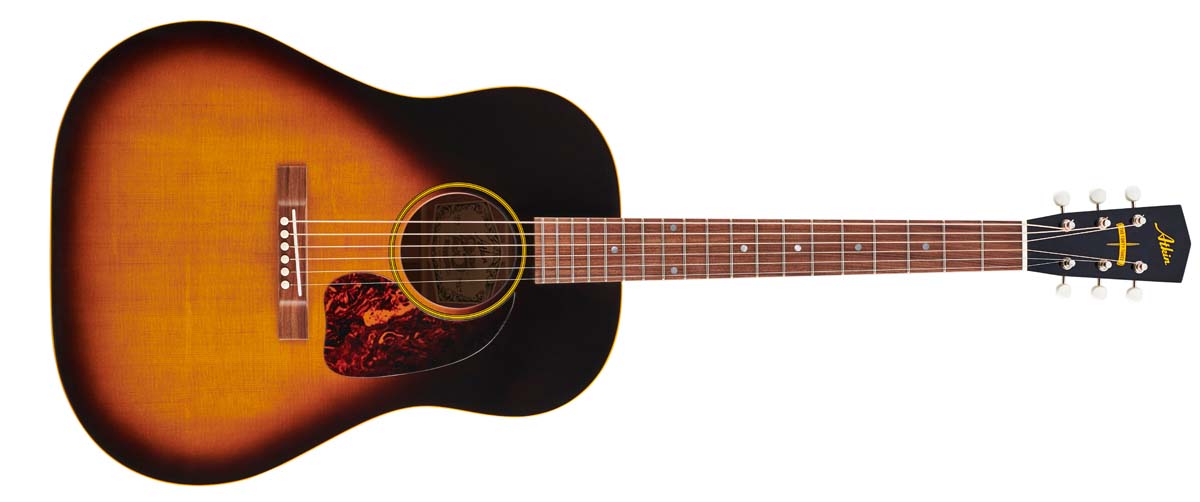
Specs
- PRICE: £2,899 (inc hard case)
- ORIGIN: UK
- TYPE: Round-shoulder dreadnought acoustic
- TOP: Solid baked Sitka spruce, vintage X-braced, hand-scalloped
- BACK/SIDES: Solid African mahogany
- MAX RIM DEPTH: 120.7mm (4.75”)
- MAX BODY WIDTH: 410mm (16.14”)
- NECK: African mahogany
- SCALE LENGTH: 630mm (24.8”)
- TUNERS: 3-on-a-plate Kluson with plastic buttons
- NUT/WIDTH: Bone/42mm (1.65”)
- FINGERBOARD: Santos rosewood (pau ferro)
- FRETS: 19, medium fine
- BRIDGE/SPACING: Santos rosewood/56mm (2.2”)
- ELECTRICS: None
- OPTIONS: See ‘Maker’s Marks’ box
- RANGE OPTIONS: Plenty of slope-shoulder choice: the Hawaiian Master, The Thirty Eight, The Nineteen, The Nineteen Deluxe, The Forty Seven and The Thirty Six
- LEFT-HANDERS: Yes
- FINISH: Nitrocellulose, aged (as reviewed; gloss also available)
- CONTACT: Atkin Guitars
In the late '70s and early '80s Neville worked for Selmer/Norlin as one of Gibson's UK guitar repairers, before joining CBS/Fender in the same role. He then moved to the fledgling Guitarist magazine as staff writer, rising to editor in 1986. He remained editor for 14 years before launching and editing Guitar Techniques magazine. Although now semi-retired he still works for both magazines. Neville has been a member of Marty Wilde's 'Wildcats' since 1983, and recorded his own album, The Blues Headlines, in 2019.
The heaviest acoustic guitar ever made? Two budding builders craft an acoustic entirely from concrete because they “thought the idea was really funny”
“For years, the only 12-string acoustics I got my hands on, the necks always pulled off after a bit. I earned a lot of money replacing them!” Why one of the UK’s most prolific luthiers is a bolt-on acoustic die-hard
